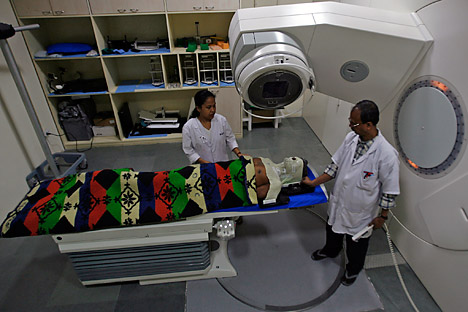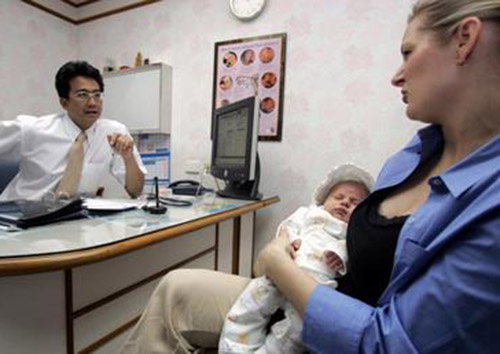|
While a wave of anti-government protests swept across Turkey during the prime holiday months of June and July, tourists seemed undeterred, as tourism revenue increased in 2013, and industry workers and experts are devising ways to continue the expansion of this important sector of the economy.
According to the state-run Turkish Statistics Institute, tourism revenues increased to $32.3 billion from $29.4 billion in 2012. Tourism is estimated to account for 3.7 percent of the country’s GDP, according to the Association of Turkish Travel Agencies (TURSAB). Foreign tourists generated 78.9 percent of the tourism revenue, while 21.1 percent came from Turkish citizens residing abroad. Foreigners spent an average of $749 during their holidays, while average expenditure for Turkish expats was calculated at $1,252. The highest number of visitors came from European countries — a total of 18.7 million out of 34.9 million. The Ministry of Tourism and Culture also announced recently that Turkey aims to rank among five top tourism destinations in the world. In a statement, Minister Omer Celik stated “in 2012 Turkey ranked 17th among the most-visited countries around the world, while in recent years it reached 6th rank according to the ranking of [the UN World Tourism Organisation]. Tourism statistics for 2013 revealed again that Turkey’s position in world tourism sector is sustainable, and the efforts made to diversify tourism and to reveal its potential paid off, making Turkey one of the important actors in world tourism in recent years.” The Gezi Park events seemed to have a limited impact on the tourism sector. Dicle Volkan, the general manager of Ramada Istanbul Grand Bazaar, located in one of Istanbul’s main historic tourist centres, said that although tourism was influenced by last year’s domestic instabilities, the picture seems brighter in recent months. “During the off-seasons like January and February, we reached very high occupancy levels, which was quite interesting. There is a price decrease in the accommodation rates to keep the tourists coming, however the increased flow of tourists compensated this. The relative decline of Turkish liras vis-à-vis foreign currency is also an attraction for tourists to prefer our country,” Volkan told SES Türkiye. According to the expectations of the World Tourism Organisation for 2013, the growth of tourism in European countries is set to be 5 percent, while the Ministry announced that Turkish tourism has shown a growth of 10 percent. The government aims to triple its tourism profits and attract 50 million annual visitors by the republic’s centennial in 2023. The Health Ministry began investing in some departments of state-run research hospitals in key areas, like ophthalmology, where Turkey attracts higher numbers of tourists for health purposes, and it will encourage health professionals to increase their linguistic skills with training to establish better communication with patients. The ministry also started a campaign, entitled “Turkey: Right choice for your life” to promote 10 different health areas, like aesthetics surgery, elder tourism, orthopaedics, cardiology and transplantation. Booklets with text in English, French, Spanish and Arabic will be distributed to passengers on Turkish Airlines flights and will include information on accredited health institutions providing services in those areas. The ministry also plans 20 websites to promote this information. The aim of the campaign is to increase Turkey’s health tourism target of $5.6 billion to $10 billion by 2018, and to compete with countries like Dubai, Thailand and India in health tourism. Bulut Bagci, the chairman of the Young Tourism Leaders’ Association, said tourism remains an important part of Turkey’s economy, and that the target markets for Turkish tourism from low- and medium-income classes in European countries and Russia showed a relative economic improvement, which helped Turkey to boost its tourism revenues. “The high currency of Euro and dollars vis-à-vis Turkish lira throughout the year also attracted tourists toward Turkey, where they could purchase much more goods and services compared with any other European country,” Bagci told SES Türkiye. Bagci added that despite the Gezi Park protests and the civil war in neighbouring Syria, tourists maintain confidence in Turkey’s domestic stability, which is boosted by effective tourism agency marketing strategies. But he added that Turkey needs to diversify its tourism areas and use its untapped potential to attract a wider range of visitors and obtain higher tourism revenues. “For instance, each single tourist who comes to Turkey for conventional tourism spends 15-fold than those who come for sea and sun tourism. We should consider tourism as a business and therefore think strategically. So, our country should use its resources in an organised manner and primarily focus on ‘niche’ areas where we can attract greater number of tourists who will spend more than the average ones,” Bagci said. “Turkey needs to act with entrepreneurship mentality in convention tourism. We may boost the infrastructure of cities other than Istanbul in terms of convention centres and develop strategies to be among the world’s well-known attraction points for convention activities,” he added. Bagci said Turkey might achieve higher records in tourism revenues and tourist profiles through health tourism as long as the number of modern hospitals increases, along with additional staff trained in foreign languages. There are 47 institutions accredited by Turkey’s Health Ministry, which hopes to expand the number to 100 by the end of the year. Last year, 480,000 foreigners received treatment in Turkish hospitals, generating $2.5 billion. Turkey is aiming to reach $20 billion of health tourism revenue by 2023. Gokce Ozdemir, associate professor from Izmir’s Yasar University, said that although Turkey ranks 6th in terms of tourist numbers, it remains at the 10th ranking in terms of tourism income. Ozdemir said there is a crucial need for rendering a sustainable basis for Turkish tourism, however the on-going political and economic instabilities may have already had a negative impact on tourists’ preferences. “Turkey should develop its tourism by focusing on specific destinations and by marketing them on a strategic basis. Each destination needs to be evaluated in line with its own assets and should be introduced to the relevant markets through appropriate strategies,” Ozdemir told SES Türkiye. “Under one common brand, Turkey should support sub-brands to develop and to make a difference vis-à-vis rival destinations of tourism. At this point, cruise tourism, senior tourism, convention and fair tourism, golf tourism and thermal tourism might provide some distinctive tools for boosting Turkey’s touristic image in specific and niche areas,” she added. |
20 February 2014 source: http://www.turkishweekly.net / The Journal of Turkish Weekly / February 20th, 2014 |
Categories
- Associations/Organisations/Government/NonGovernment
- Dental Tourism
- Events/Exhibitions/Conferences/Forums
- Fertility Tourism
- Health /Medical Treatment For Overseas Treatment
- Health/Medical Tourism Boards
- Health/Medical/Wellness Marketing And Management
- Healthcare Cities
- Healthcare Service Providers
- Healthcare/Medical Insurance/ Loans
- Interviews
- Medical Tourism/Health Tourism
- Medical Treatment/Health Treatment Subject By Speciality
- Others
- Reports,Features, Statistics
- Top Tips (all)
- Travelling For Surgery Abroad / Medical Surgery Overseas
- Uncategorized
- Wellness Tourism
-
Recent Posts
Tags
asia health tourism asia medical tourism Care tourism care tourism india costa rica medical tourism dental tourism dental tourism in asia Dental tourism in Costa Rica dental tourism in europe dental tourism in hungary Dental tourism in india dental treatment abroad global health tourism global medical tourism health care tourism health tourism health tourism asia health tourism costa rica health tourism in asia health tourism india health tourism in thailand health tourism malaysia health tourism mexico hip resurfacing surgery in india india medical tourism liver transplant surgery india at low cost medical tourism medical tourism asia medical tourism facilitator medical tourism in asia medical tourism india medical tourism in thailand medical tourism malaysia medical tourism mexico medical tourism philippine medical tourism philippines medical tourists medical travel medical treatment abroad medical treatment overseas travelling abroad for surgery travelling overseas for dental surgery travelling overseas for health treatment travelling overseas for surgery wellness tourism



